Save the date—the 2010 Chicago Green Festival is May 22-23 at Navy Pier!
Wednesday, January 6th, 2010Mark your calendars and save the date—the 2010 Chicago Green Festival is May 22-23 at Navy Pier!
Mark your calendars and save the date—the 2010 Chicago Green Festival is May 22-23 at Navy Pier!
For those of you in Chicago, check out Greenheart’s new storefront at 1911 W. Division Street. Greenheart carries a wonderful selection of fair trade and eco-friendly goods, including some products from Fair Earth. If you haven’t already visited their store, now is the time to check it out! Stop by on July 23rd for their welcoming party:
Fair Earth has developed a relationship with Paper Craft to bring you a beautiful product line of hand-made paper products.

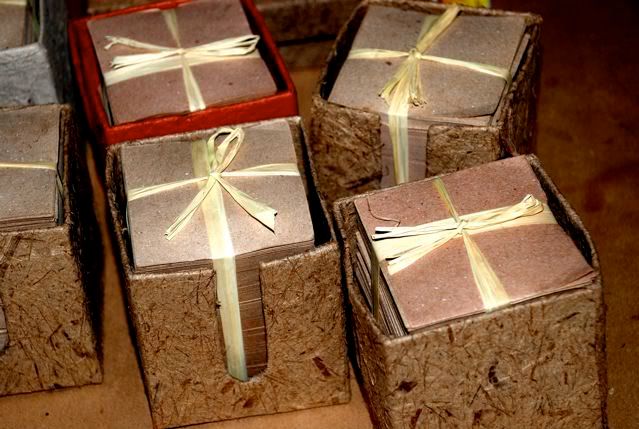
Following is information, used with permission, from their website.
Paper Craft produces beautiful hand made paper in Uganda using only natural raw materials such as banana fibers, pineapple tops, elephant grass and recycled paper. No chemicals are used! This paper is then transformed into beautiful as well as useful products and unusual crafty creations.
Paper Craft was set up in 2006 to provide a sustainable income for a group of socially disadvantaged Ugandans, (mainly women) through the production and sale of hand made paper and paper products. The majority of our employees would otherwise find it almost impossible to find a job or to support their families.
We provide additional income to local farmers by purchasing elephant grass and banana fiber. We also buy pineapple tops which are considered to be waste and would otherwise be burnt, as well as collecting scrap paper from offices in Kampala.
By choosing Paper Craft you are supporting a self-sufficient sustainable business, promoting environmental awareness and encouraging recycling.

We found a little house on the side of a hill.
A garden with mango trees, avocado and jackfruit.
The floors were made of earth and there was no electricity.
The walls were un-plastered and the doors not there.
So we set to work transforming this house;
we cemented the floors and plastered the walls,
added a verandah and brought in the electricity.
We started from scratch buying everything we would need;
a blender, a press, scissors, paper and glue,
tables and chairs, a computer, a printer
and a paper cutter or two;
drying screens, a generator; drums for water
and of course new designs from geckos to warthogs.
You should see our workshop now
A real hive of activity!


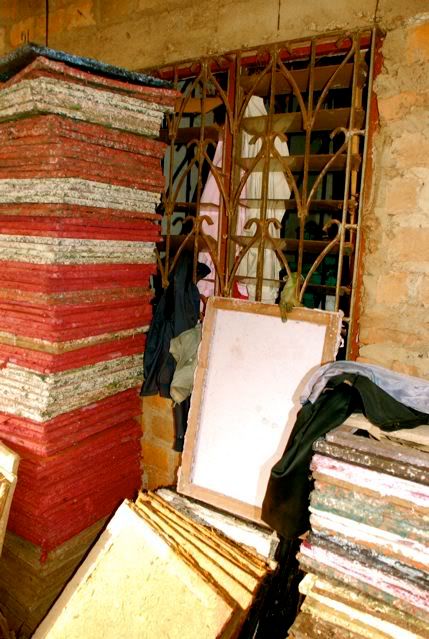
1. Banana fibers, pineapple tops and elephant grass are cut into small pieces and boiled for 8 hours.

2. When the fibers are soft they are blended and recycled paper is sometimes added to create different textures and colors of paper.

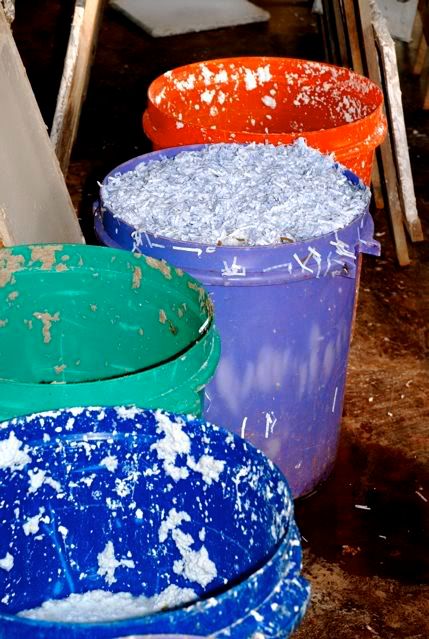
3. The pulp is mixed in large water containers and is removed using screens made of mosquito mesh.
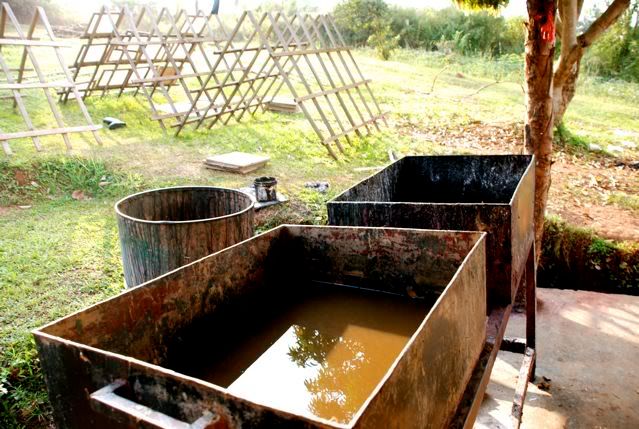

4. These racks, covered in the pulp, are then put in the sun to dry.

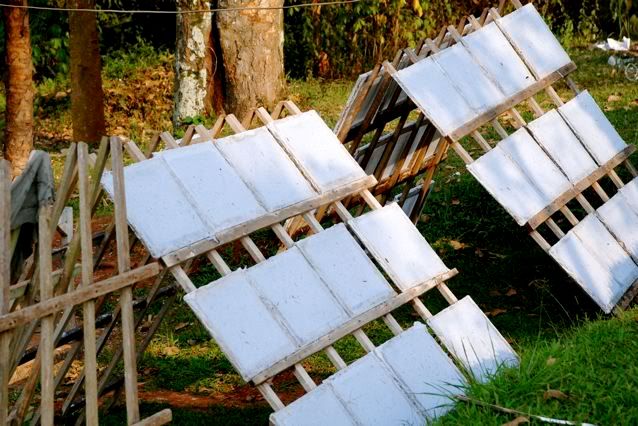
5. The dry sheets of paper are removed from the screens and put into a press to squash them flat.

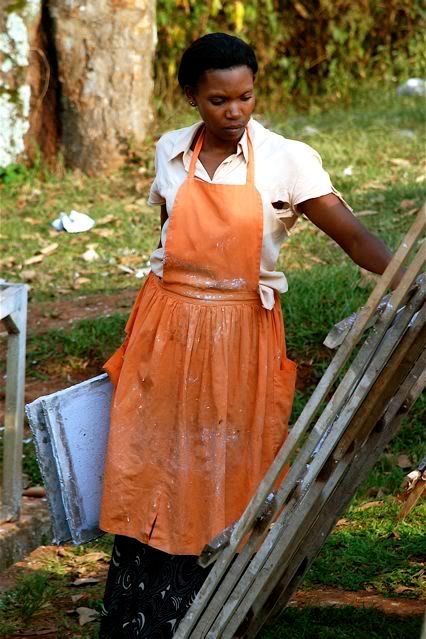

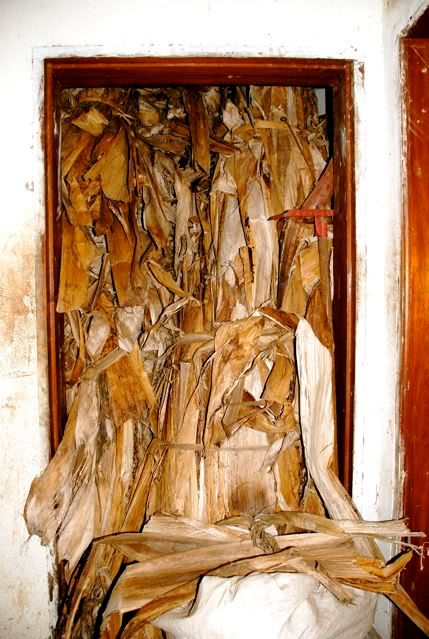
Uganda is Banana Country. Not only does Uganda grow delicious sweet bananas but also green bananas or ‘Matoke’ which are the staple food for most of central and southern Uganda. Some of our paper is made using banana fiber which comes from the stem of the Banana plant (which is rather like an onion as it is made up of many layers). When the outer layer dries it can be peeled off the stem without killing the plant itself.
Uganda also has THE most delicious pineapples in the world! We use the discarded tops of the pineapples which we collect from local markets and which are usually considered to be rubbish.
As the name suggests this is a giant, course yet luscious grass that is used to feed cows and pigs and to stop erosion.
This is a very special material indigenous to Uganda that comes from the bark of a fig tree called ‘omutuba’. Bark is stripped from the tree, (without killing the tree) soaked in water and then beaten with a mallet and dried. Traditionally it was used as clothing. Paper Craft uses it to cover albums, photo frames and note books and to decorate cards. It is the same color as a ginger nut biscuit.
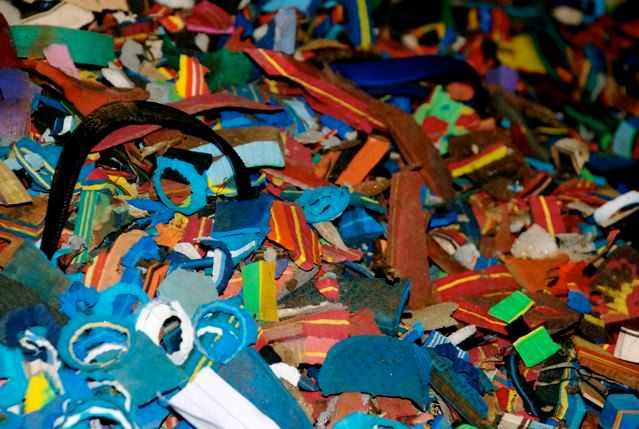
Looks like junk?
Think again.
These discarded flip-flops that wash up onto the shores of Kenya are turned into beautiful works of art, jewelry, and sculpture by skilled artists in Nairobi.
Don’t believe me? Come see for yourself!
In accordance with Fair Earth’s focus in 2009 to bring you products that are not only fair trade but also green and friendly to our earth, we are proud to introduce Uniqueco Designs, a sustainable income-generating project turning discarded flip-flops into products you’ll love!
How does it work? Every year, thousands of flip-flops wash up on the shores of Africa. Accumulating from as far as Asia, the discarded flip-flops create an environmental disaster for the natural marine ecosystems. The rubber is mistakenly swallowed by marine life, and it prevents hatching turtles from safely reaching the sea. Being indestructible, the flip-flop rubber continues to accumulate causing the problems to exacerbate.
Instead of allowing these non-biodegradable materials to clog the beaches or contribute to ever-growing landfills, Uniqueco Designs is turning the flip-flops inro building blocks for a beautiful line of jewelry and accessories.
The sandals are already beautifully colored, so no extra dyes need to be added. They are sanded and glued together to create color patterns, and then infused with people’s creativity to form a diverse product line: sculptures, lampshades, beads, jewelry, tablemats, rugs, key chains – you name it!
The products are inspired by local ingenuity and employ a broad range of workers, from unskilled beach-combers to bead makers to talented artists and designers. Items are priced generously so all of the workers earn a living wage, allowing them to maintain their way of life and provide a better future for themselves and their families.
This same group also makes beautiful handbags out of discarded rubber tire tubes as well as a selection of products woven together from recycled plastic bags.
Let them be an inspiration. Next time you think about throwing something in the trash to contribute to our earth’s massive landfills, put your creative mind to work and turn it into something useful and beautiful!
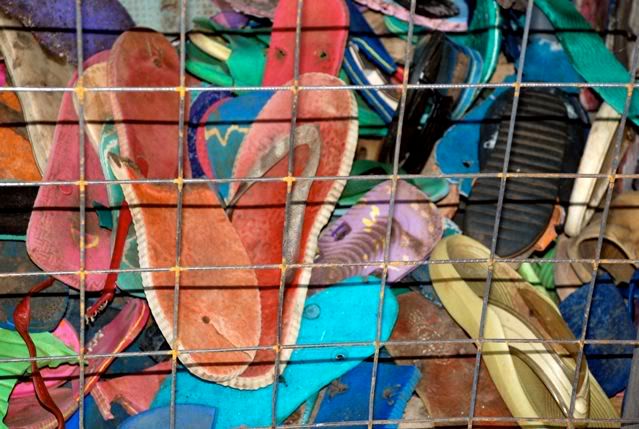

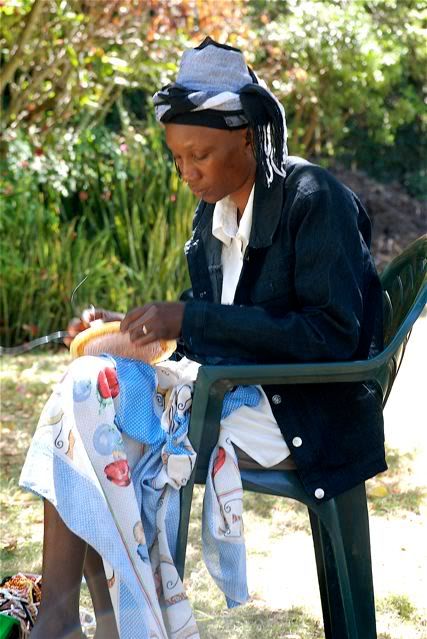
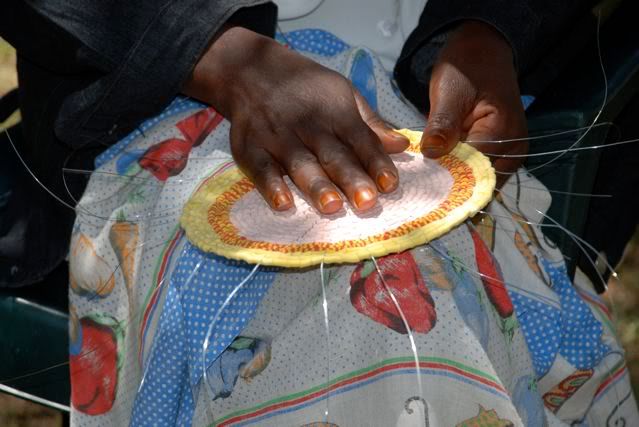
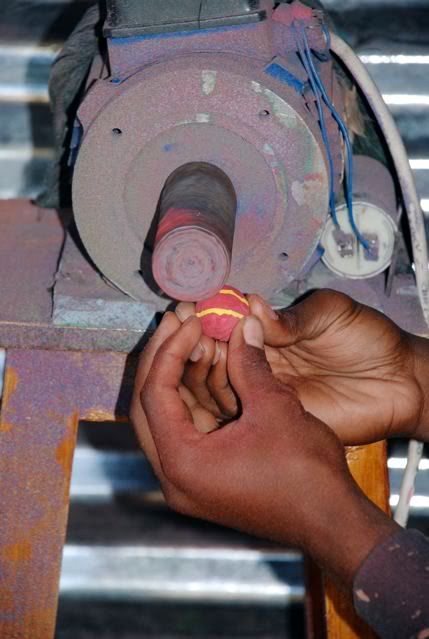
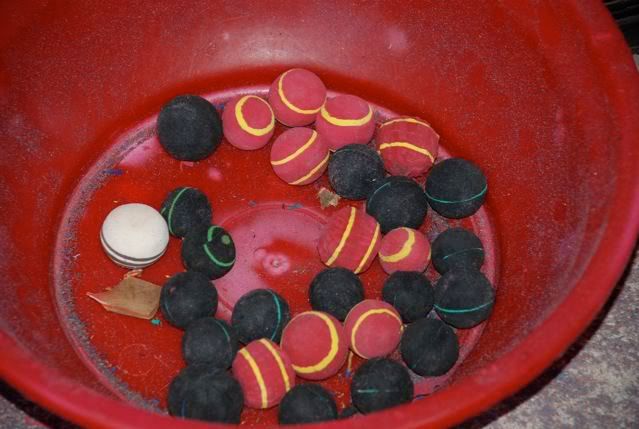
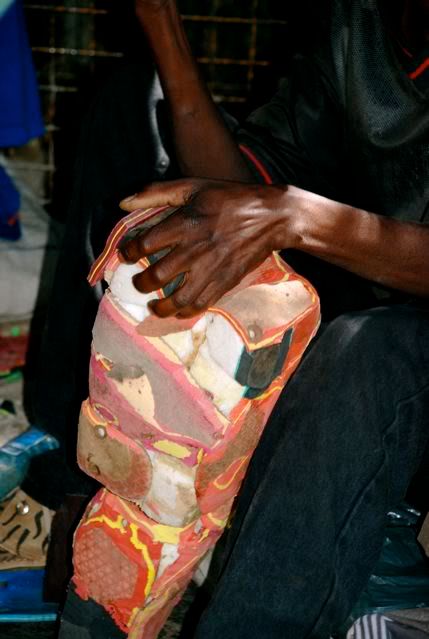
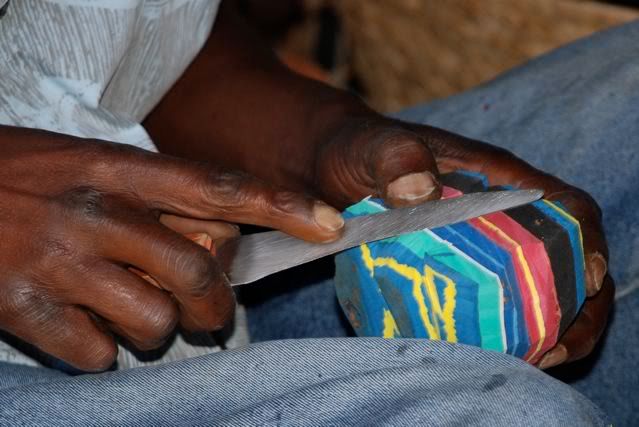
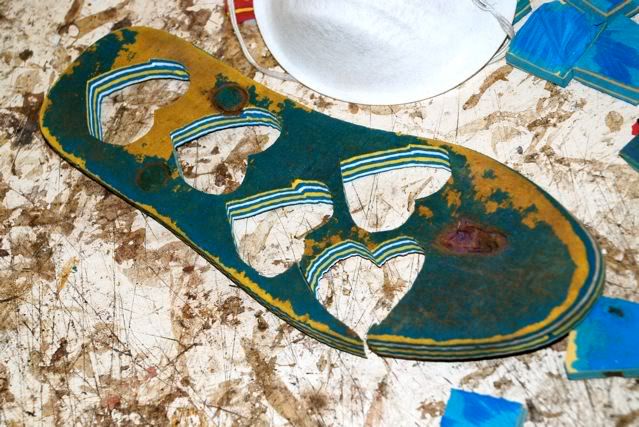
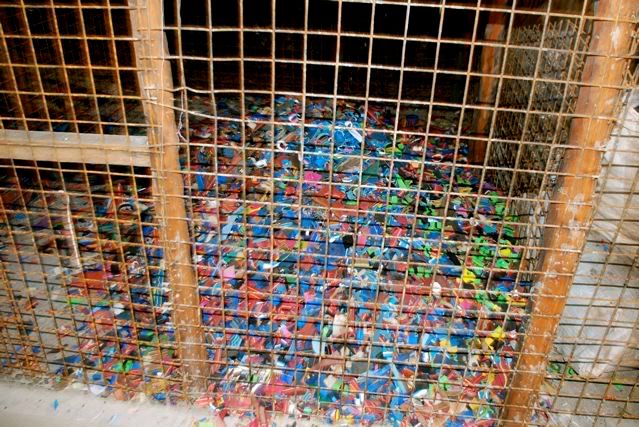
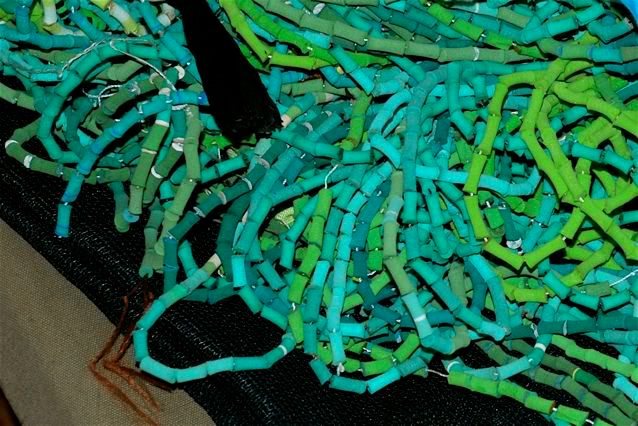
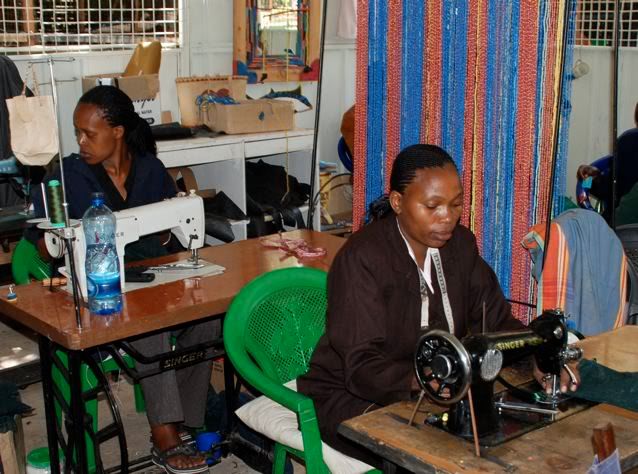
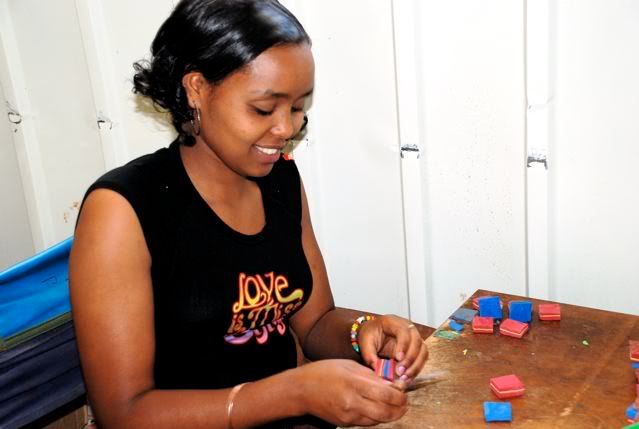
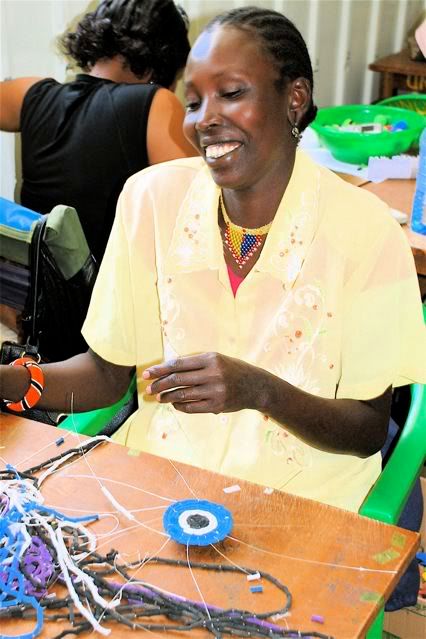
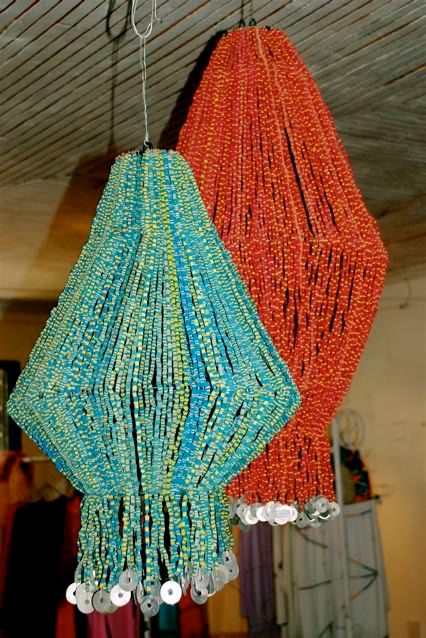

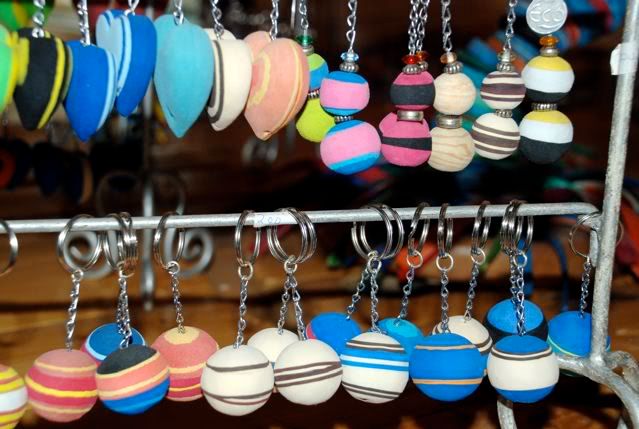
Site and contents © FAIR EARTH 2008. e-mail: info@ourfairearth.com.
Visit our retail shop at the Andersonville Galleria - 5247 N. Clark St. Chicago, IL